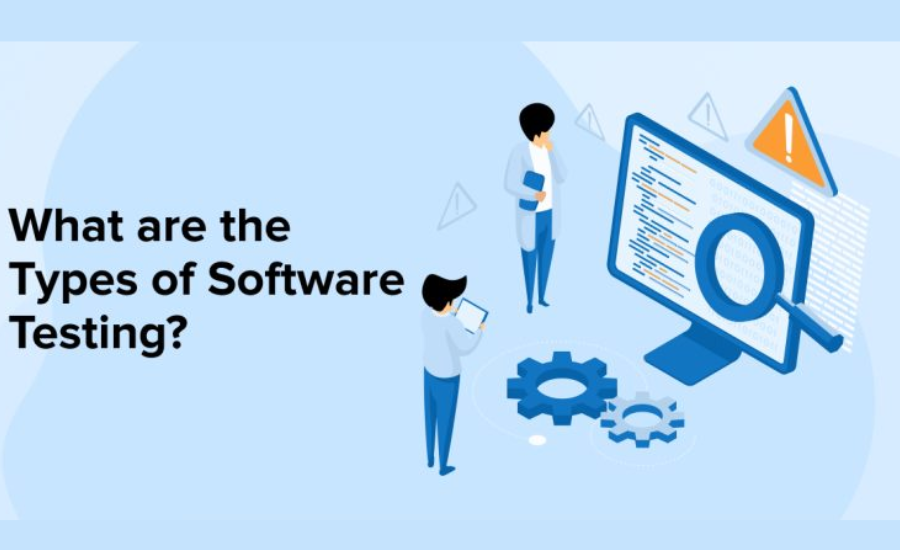Understanding the Significance of Testing in Zillexit Software
In today’s competitive landscape, Convergent Technologies Operating Systems (CTOs) and business leaders are increasingly focused on delivering impeccable software products. This focus is particularly relevant for Zillexit software. But how can you ensure your software solution meets the promised standards of security and efficiency? In this guide, we will comprehensively explore what is testing in Zillexit software, emphasizing its importance, methods, and challenges. We’ll also examine future trends in software testing specific to Zillexit, guiding you through this vital aspect of software development.
What Is Zillexit Software?
To fully grasp what is testing in Zillexit software, we first need to define the Zillexit tool itself. Zillexit is an innovative software solution crafted to simplify complex business transitions. It boasts a range of advanced functionalities, including secure data exchange, document management, communication facilitation, and due diligence processes.
By enhancing collaboration among stakeholders and automating repetitive tasks, Zillexit ensures a smooth and efficient transition for all parties involved. Its user-friendly design and productivity-enhancing features have made it a preferred choice for professionals seeking operational excellence.
The Role of Testing in Software Development
Testing in software encompasses the systematic evaluation of a software solution to ensure it fulfills its intended purpose and meets the necessary standards. This critical phase of the software development lifecycle aims to identify errors, bugs, gaps, and unmet requirements. Through rigorous testing, developers can guarantee a seamless user experience that aligns with both technical specifications and business needs.

Defining What Is Testing in Zillexit Software
Purpose and Definition
When we discuss what is testing in Zillexit software, we refer to a structured process aimed at detecting and resolving glitches, bugs, and security vulnerabilities before the software goes live. This proactive approach protects users’ investments and enhances the overall user experience for both sellers and buyers.
The testing process for Zillexit software involves several stages designed to assure quality and user satisfaction. It evaluates the software’s performance under various conditions, including scalability and stress testing. Ultimately, the goal is to deliver a defect-free software solution.
Tools Employed in Zillexit Software Testing
Numerous tools facilitate unit testing in software development, including NUnit and JUnit. These widely used tools enable developers to conduct thorough checks on Java and .NET software, functioning as automated inspectors that ensure quality without requiring manual intervention throughout the software lifecycle.

Importance of Testing in Zillexit Software
With a clear understanding of what is testing in Zillexit software, let’s delve into its significance for business owners and CTOs:
Enhancing Security
Software testing is essential for protecting sensitive financial data and confidential information during the transition process. By rigorously testing, businesses can instill confidence in all stakeholders and safeguard their reputation.
Mitigating Risks
Testing in Zillexit software helps identify and address potential risks before they disrupt the transition. This proactive approach leads to smoother operations, fewer delays, and ultimately, more successful outcomes.
Cost Efficiency
Understanding what is testing in Zillexit software involves recognizing the cost benefits of early bug detection and resolution. Addressing issues before launch is significantly cheaper than fixing problems post-release. An effective testing strategy can save time and resources in the long run.
Enhancing User Experience
A thoroughly tested Zillexit software provides a user-friendly experience for all participants, minimizing frustration and enhancing efficiency throughout the transition process.
Strategies for Effective Testing in Zillexit Software

To maximize the effectiveness of testing in Zillexit software, consider the following strategies:
Functional Testing
Functional testing verifies that all aspects of Zillexit software, including document management and communication tools, operate as intended. This comprehensive assessment ensures every feature works flawlessly.
Performance Testing
This testing evaluates how well the software handles significant workloads, ensuring seamless operation under various user scenarios. Performance testing is crucial for maintaining efficiency.
Security Testing
Security testing is essential to identify and rectify vulnerabilities that could compromise sensitive data during the final handover process. This aspect of testing ensures that Zillexit software remains secure.
Usability Testing
Usability testing involves real users interacting with the software, allowing developers to identify any usability issues and ensure an intuitive user experience.
Challenges in Testing Zillexit Software
Understanding what is testing in Zillexit software also involves acknowledging the challenges developers face that may impede the process. One common hurdle is the emergence of unforeseen bugs, which can complicate the testing workflow.
Additionally, time constraints often pressure testing teams to meet tight deadlines, impacting the thoroughness of testing. Ensuring consistent performance across diverse devices and platforms is another challenge that can complicate the software development lifecycle.

The Future of Testing in Zillexit Software
Looking ahead, the landscape of testing in Zillexit software appears promising. Emerging trends, such as Machine Learning and Artificial Intelligence (AI), are poised to transform traditional testing methodologies. These advanced technologies can predict potential issues and enhance the accuracy and efficiency of the testing process.
Furthermore, cloud-based testing is gaining traction, offering flexibility for testing software in various environments without the need for extensive hardware. This evolution in testing practices is redefining what is testing in Zillexit software, paving the way for Continuous Deployment/Continuous Integration (CD/CI) methodologies that enable real-time bug detection and software quality improvements.
FAQs on Testing in Zillexit Software
Q: What is the primary purpose of testing in Zillexit software?
A: The primary purpose of testing in Zillexit software is to identify and resolve glitches, bugs, and security vulnerabilities before the software goes live. This proactive approach aims to enhance user satisfaction and protect sensitive data during business transitions.
Q: What types of testing are performed on Zillexit software?
A: Testing in Zillexit software typically includes:
Functional Testing: Ensures all features operate as intended.
Performance Testing: Assesses how well the software manages heavy workloads.
Security Testing: Identifies vulnerabilities to safeguard sensitive information.
Usability Testing: Involves real users to evaluate the intuitive nature of the software.
Q: What tools are commonly used for testing Zillexit software?
A: Common tools for testing Zillexit software include:
NUnit: For testing .NET applications.
JUnit: For testing Java applications. These tools help automate the testing process and ensure quality throughout the software lifecycle.
Q: Why is testing important for businesses using Zillexit software?
A: Testing is crucial for businesses using Zillexit software as it enhances security, mitigates risks, improves cost efficiency, and enhances user experience. Rigorous testing instills confidence in stakeholders and contributes to smoother business transitions.
Q: What challenges might arise during the testing process for Zillexit software?
A: Challenges in testing Zillexit software can include:
Unforeseen Bugs: Unexpected issues may complicate testing workflows.
Time Constraints: Tight deadlines can impact thorough testing.
Cross-Platform Consistency: Ensuring consistent performance across various devices and platforms can be challenging.
Q: What is the future of testing in Zillexit software?
A: The future of testing in Zillexit software is expected to be influenced by advancements in Machine Learning and Artificial Intelligence, which can enhance testing accuracy and efficiency. Additionally, cloud-based testing and Continuous Deployment/Continuous Integration (CD/CI) methodologies are likely to reshape traditional testing practices.
Conclusion
Testing in Zillexit software is a vital aspect of the software development lifecycle, ensuring that the solution meets high standards of security, functionality, and user experience while facilitating business transitions through advanced features for secure data exchange and document management. By employing various testing methods—such as functional, performance, security, and usability testing—developers can systematically identify and resolve issues before deployment, thereby enhancing security, mitigating risks, improving cost efficiency, and ultimately delivering a superior user experience. Despite facing challenges like unforeseen bugs, time constraints, and the necessity for cross-platform consistency, the future of testing looks promising with innovations in AI and cloud-based solutions poised to enhance testing methodologies, making the process more efficient and effective. Understanding the significance of testing in Zillexit software not only aids in delivering high-quality products but also positions businesses for success in a competitive landscape.
Read Next: mu88-elysii





